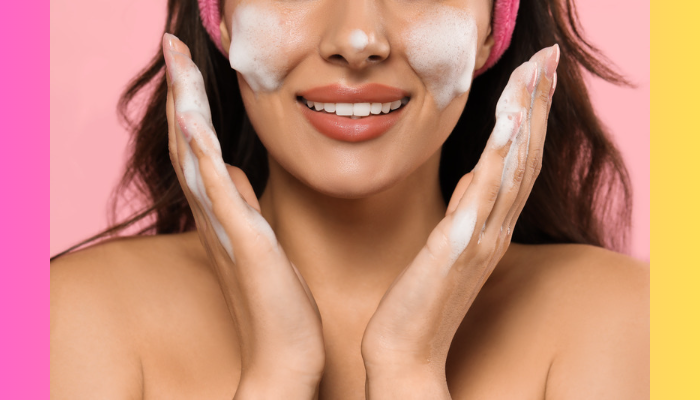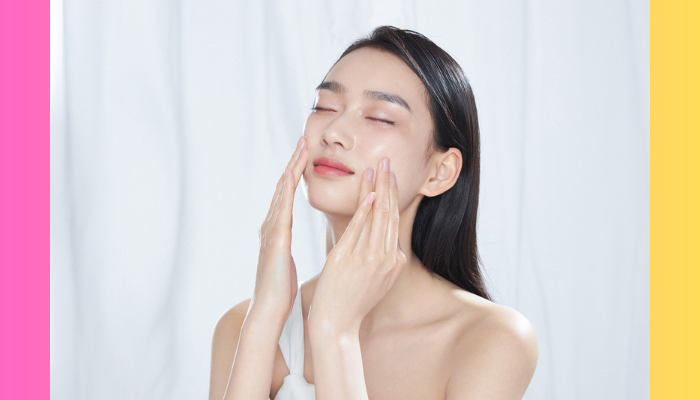Dermatologists provide insights on the trending skin care technique, advising who could benefit from it and who should avoid it.
Maintaining healthy-looking skin requires washing your face daily, as the American Academy of Dermatology (AAD) advises. Maintaining healthy-looking skin requires you to wash your face daily, as the American Academy of Dermatology (AAD) suggested. However, there is a popular trend on social media called double cleansing. Is it as effective as people claim it to be?
Korean women have used and loved The double cleansing technique for years. Recently, it has gained worldwide popularity due to endorsements from beauty influencers and celebrities. This method is advertised as a way to thoroughly cleanse the skin by removing dirt, makeup, sunscreen, and impurities.
The trend of #double cleansing on social media, particularly TikTok, is undeniable. With 385 million views and counting, it’s clear that many people are interested in learning about this method and finding ways to personalize it to their specific needs.
One TikTok double cleansing video has gained more attention than others. It was created by beauty vlogger and Em Cosmetics founder Michele Phan and has received 700,000 likes. Many viewers are interested in the video and have asked questions about it in the comments.
Many makeup lovers and people with oily or acne-prone skin have praised the face-washing routine. This routine helps control excess sebum production, a substance the sebaceous glands produce that can cause unwanted shininess and breakouts by blocking the follicles.
Is it essential to cleanse your face twice? This article will answer this question and provide all the information you need about double cleansing. We will touch on its origins, benefits, drawbacks, and more.

Definition of Double Cleansing
Double cleansing means washing your face twice with two different washes. According to Karan Lal, MD, a board-certified dermatologist in Scottsdale, Arizona, this technique helps to remove oils and oily product buildup on the skin. The idea behind double cleansing is that a single cleanse, especially with a non-oil-based cleanser, may not remove all skin oils, secretions, or makeup altogether.
Origin of Double Cleansing
Double cleansing means washing your face twice with two different washes. According to Karan Lal, MD, a board-certified dermatologist in Scottsdale, Arizona, this technique helps to remove oils and oily product buildup on the skin. The idea behind double cleansing is that a single cleanse, especially with a non-oil-based cleanser, may not remove all skin oils, secretions, or makeup altogether.
Possible Benefits of Double Cleansing
Double cleansing has gained widespread recognition as a technique to give the skin a deeper clean, which may benefit everyone differently depending on your skin type and concerns. In the realm of culturally influenced skincare techniques like this one, it’s noteworthy that prominent organizations in the field of dermatology, such as the AAD, still need to address its potential benefits. Nonetheless, Dr. Lal says the double cleansing method is best for the following people:
- People who wear a full face of makeup daily
- People who have oily or acne-prone skin
- City dwellers who are frequently exposed to air pollution
- People with facial hair

Drawbacks of Double Cleansing
Double cleansing has no significant drawbacks. It is crucial to select the appropriate skin products for optimal results. According to Corey L. Hartman, MD, a board-certified dermatologist based in Birmingham, Alabama, you must Search for ingredients tailored to your skin needs. Using the wrong products can worsen existing skin problems. If you have dry skin, it’s best to avoid using it. A facial cleanser with oil-reducing benzoyl peroxide is more suitable for acne-prone skin.
Who Should Try Double Cleansing (or Avoid It)
Double cleansing is not a mandatory skincare routine for everyone. If you have sensitive skin or skin conditions such as rosacea or eczema, it’s best to avoid double cleansing, especially during active flare-ups. Dr. Hartman recommends this precaution to ensure the safety and comfort of your skin.
Selecting the right ingredients and considering your skin concerns are essential to achieving effective skincare. Hartman says this approach is suitable for individuals passionate about skincare as a hobby or struggling with problematic skin issues, such as acne or blemishes.
Don’t feel pressured to double cleanse just because it’s popular. While it can be good for your skin, it’s not necessary to do it every time.
When and How to Double Cleanse
To get the most benefits for your skin, it’s recommended to use the double cleansing technique at night. This is because the accumulated grime from the day can be removed, allowing your skin to reset. Additionally, it’s a great way to ensure your nighttime active ingredients, like retinol or hyaluronic acid, can better access your skin’s surface.
To achieve double cleansing, follow these recommended steps :
- Use an oil-based cleansing oil, balm, or micellar water to remove your makeup. Apply the formula onto dry skin and massage it in circular motions.
- Add water to your skin to spread the balm and evenly remove the product
- After removing your makeup, massage an unscented water-based cleanser into your skin. Rinse it off with lukewarm water.
- Gently pat your skin dry with a facial towel and proceed with the remaining steps of your skincare routine.
Dermatologist-Recommended Products for Double Cleansing
For the First Cleanser
Lal suggests two oil-based makeup removers for your double cleansing routine: CeraVe Makeup Removing Balm from (Amazon.com) and Clinique Take the Day Off Cleansing Balm from (Sephora.com). CeraVe is affordable, gentle on all skin types, and contains ceramides that can improve skin hydration. A randomized controlled trial was published, and its findings will be discussed—in the Journal of Drugs and Dermatology in April 2021.
For sensitive skin, Lal recommends the luxurious Clinique option that uses safflower oil, which has anti-inflammatory properties, according to a past study.
For the Second Cleanser
Choosing a facial wash that suits your skin type is crucial. If you have normal, dry, or sensitive skin, try the Cetaphil Daily Facial Cleanser, which is reasonably priced and available on (Amazon.com). It has been around since 1947 and is known for its gentle yet effective formula. According to Lal, it is an “OG” product that contains skin-strengthening niacinamide, hydrating glycerin, and soothing panthenol. Based on a study and an article, he assures that it won’t harm your skin.
For those with oily skin, it’s recommended to use a facial cleanser that contains beta hydroxy acid (BHA) to help remove excess oil. Two great options to consider are Cetaphil Gentle Clear Cleanser (available on Amazon.com) and Neutrogena Oil-Free Acne Wash (available on Amazon.com). On the other hand, if you have extra-dry skin, it’s best to look for a facial cleanser that contains hydrating glycerin. La Roche-Posay Toleriane (available on Amazon.com) is a highly rated option.
If you have eczema or rosacea, using a facial cleanser with soothing niacinamide through double cleansing may be helpful when your skin is not experiencing a flare-up. You may want to consider two highly recommended formulas: Naturium Niacinamide Cleansing Gelée (available on Amazon.com) and E.L.F. SuperClarify Cleanse (available on Amazon.com).
Summary
While double cleansing may benefit people with certain skin types, it is unnecessary for everyone. According to the American Academy of Dermatology, cleaning your face twice daily is advisable to maintain healthy skin. However, individuals who frequently wear makeup or have oily or acne-prone skin may find that more than one cleanse is needed to achieve optimal results.
Also check 8 Simple Daily Exercises for a Visibly Muscular Six-Pack
